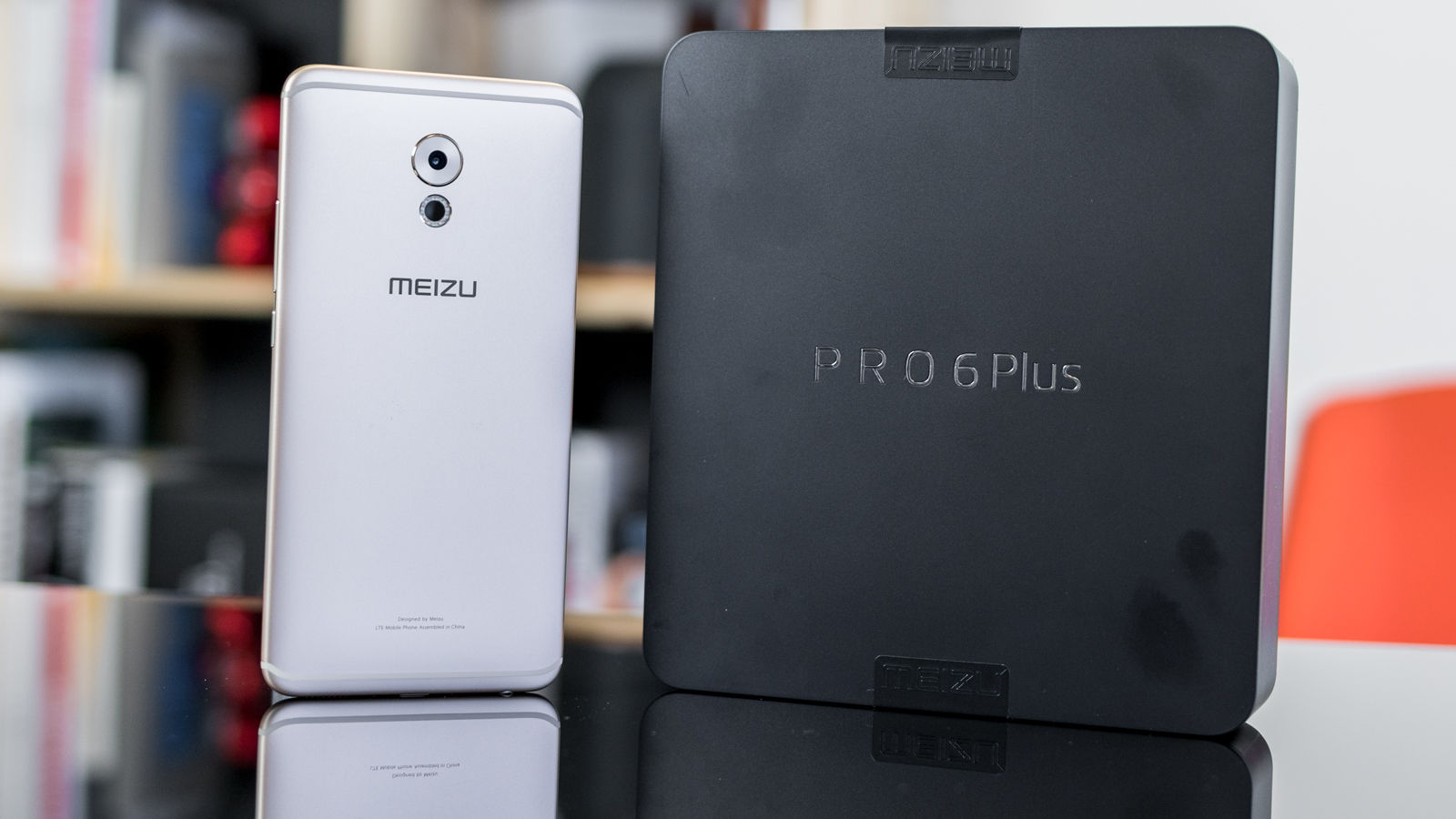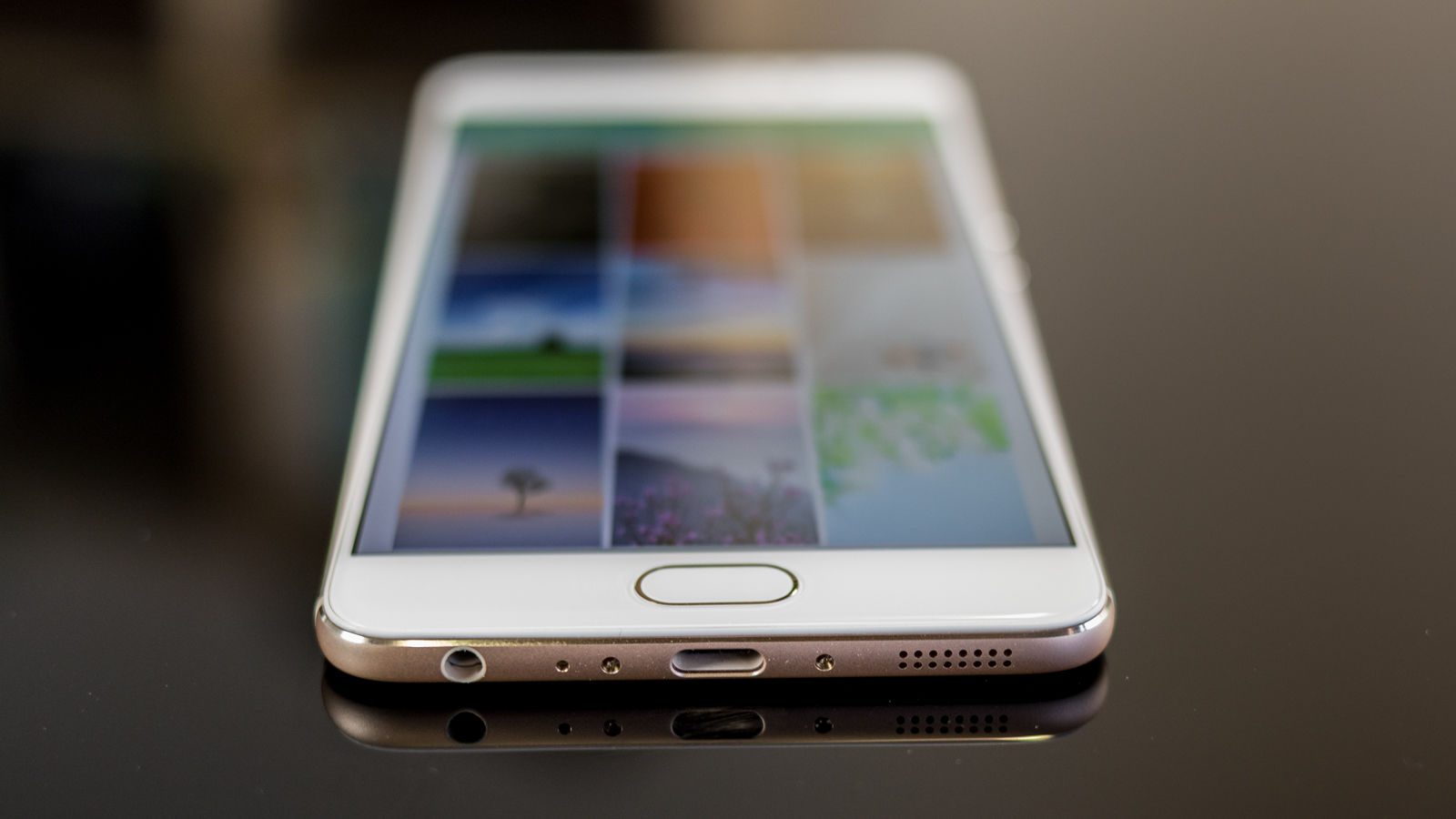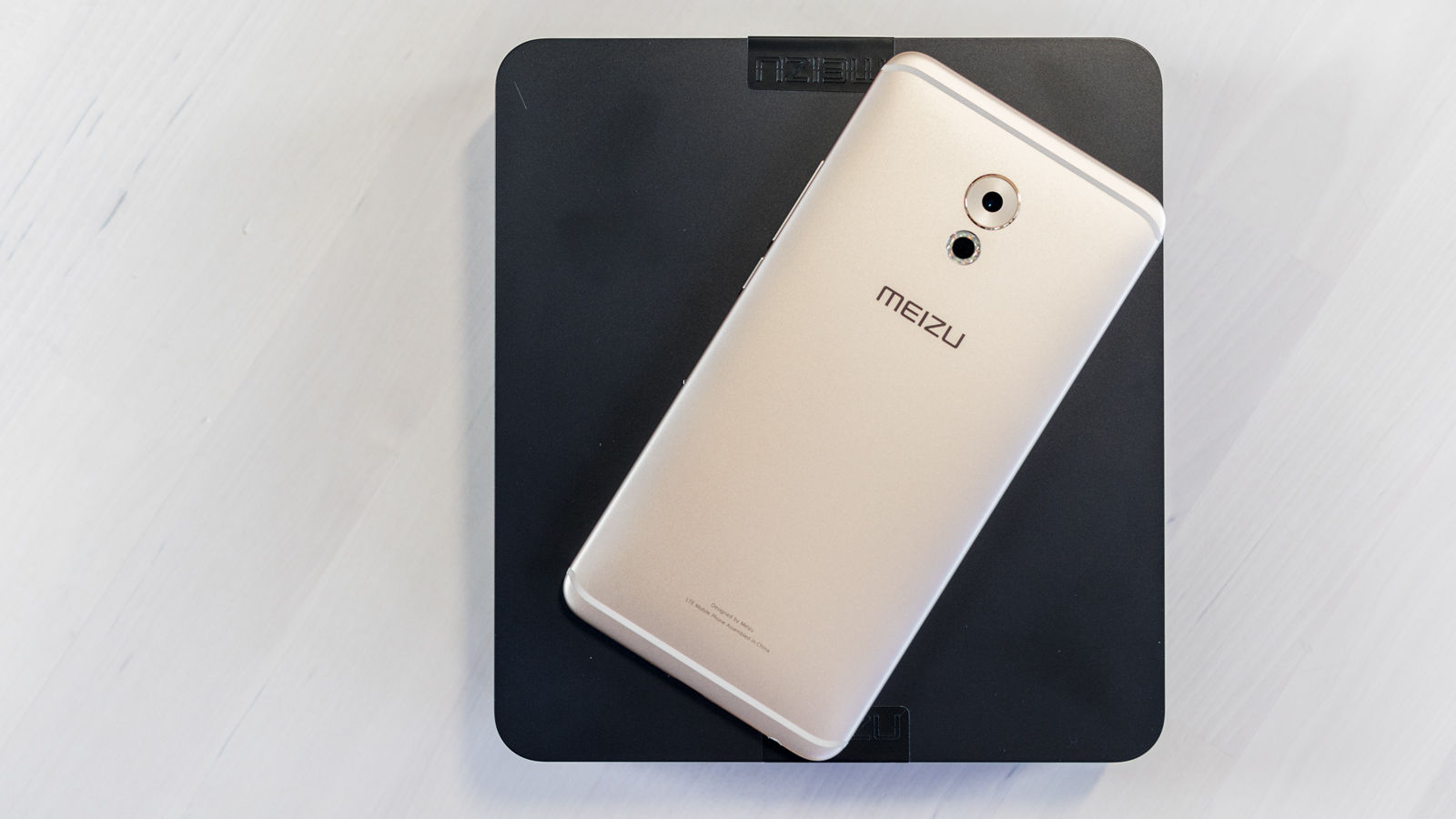Consider that this price puts it on par with the OnePlus 3T, a highly soughtafter, incredibly powerful flagship Android phone (for now – the OnePlus 5 is due any day) that also costs £399. Now consider that in place of the OnePlus 3T’s 5.5in full-HD screen you get a 5.7in Quad-HD panel, and a design reminiscent of the iPhone 6s Plus. Performance is very good from the Exynos 8890 chip and 4GB of DDR4 RAM (that’s the same setup as in the Galaxy S7), if not as exemplary as that of the OnePlus 3T. However, before you rush off and buy the Meizu Pro 6 Plus over the OnePlus 3T, there are a couple of other considerations you need to be aware of. First, the OnePlus 3T is sold direct from the company or via major mobile operators such as O2, which means help is easily at hand should anything go wrong. By comparison the Meizu Pro 6 Plus is sold by Geekbuying, a Chinese importer through which support will be less readily available (it’s also available direct from Meizu, but only if you live in China). Though we’ve never personally had an issue dealing with Geekbuying, you should know that your rights are different when purchasing from China than they are the UK and Europe. Second, because you’ll be importing this phone from China you’ll legally be responsible for paying VAT duty. Of course some parcels get through Customs without a whisper of a fine, and others get around exorbitant costs by lowering the value on the shipping paperwork (your fee is calculated at 20 percent of this value plus an admin fee of around £11), but if you are asked to pay import duty you do have to do so. Naturally this will raise the overall cost of the phone, so it’s worth factoring into your budget. You can read more about the risks associated with buying Chinese tech in our article on the pros and cons of purchasing grey-market tech. You’ll also like: Best big-screen phones 2017
Meizu Pro 6 Plus design and build
Meizu has built the Pro 6 Plus to a high standard, with a metal unibody design (available in gold, as seen here, grey or silver) and a clean white fascia that will ring familiar with iPhone 6s Plus users. It’s not a carbon copy of the iPhone, with a rectangular rather than circular front-facing home button and some other little tweaks, but you can easily see the similarities, right down to the top- and bottom antenna lines and Designed by Meizu logo on the rear. One of those tweaks can be found at the back, right about where you might expect to see an Apple logo, and it’s something that marks a first for us in phone reviews: a 10-LED flash ring that sits below a centrally located 12Mp camera. It looks and, on paper, sounds cool, but in practise isn’t any more adept at low-light photography than some dual-LED flashes we’ve tried. The camera itself juts out of the chassis only a small amount, which pleasingly stops the handset rocking on a flat surface and also detracting from the overall design. Also see: Best Android phones 2017 A single speaker grille is found on the bottom edge of the handset, alongside a fast USB-C 3.1 port and a 3.5mm headphone jack. On the right edge you’ll find a volume rocker and power button, and on the left a pin-operated dual-SIM tray. So, everything is pretty much where you’d expect to find it. That is until you go to actually use the phone, and that’s when you realise Meizu has implemented a horrible button setup akin to that of the iPhone. (And that’s not the only iPhone-esque change when it comes to usability, because there’s also no app tray to be found.) Rather than finding physical or, more often these days, capacitive buttons for home, back and multitasking, the Meizu Pro 6 Plus has just one central button. It’s well done and looks good, with a gold trim and a flush design, but it’s a nightmare to get your head around. You tap it to go back, or press to go home. To access multitasking you swipe up from the bottom edge of the screen either side of the home button – something we found out entirely by accident. Also integrated to this home button is a fast and responsive mTouch fingerprint scanner, which admittedly works very well. For a device with a large 5.7in screen the Meizu is very comfortable to hold in a single hand, and it’s not overly heavy at just 158g. This ergonomic design is achieved through a slim 7.3mm chassis that is slightly rounded at the edges, as well as slim screen bezels to the left and right, together reducing the distance your finger might ever need to stretch across the display. The display itself is a good one, and one of few Quad-HD panels we’ve seen in Chinese phones. This is a Super AMOLED panel, which is our favourite kind of screen tech, with punchy, vibrant colours and rich and proper blacks. Brightness and overall quality isn’t as high as you’d find on Samsung’s Quad-HD phones, but it’s certainly difficult to fault. That said, Meizu doesn’t specify whether any protective glass is in use here, and being a Chinese phone you will likely find it more difficult to source a protective case. Also see: Best mid-range phones 2017 Another similarity with Samsung phones is the implementation of an Always-on display. When activated (it’s off by default), you’ll be able to see at a glance what is the time, date and remaining battery capacity simply by looking at the screen. The feature uses a tiny amount of battery power, and should actually reduce the amount of power you use overall as you aren’t constantly waking the screen to check the time. Of course, battery life isn’t really something you need to worry about with the Pro 6 Plus, since its 3,400mAh battery should easily last you two days of use. It doesn’t support wireless charging like Samsung’s rival, but it does seemingly just keep on going. (And you can always use a power bank if you need more.) One thing we’d like to see in the Meizu Pro 6 Plus’ follow-up is waterproofing protection, which is beginning to make its way on to the UK smartphone market but less so in China.
Meizu Pro 6 Plus core hardware and performance
We mentioned earlier that the Meizu Pro 6 Plus has the same core hardware setup as the Galaxy S7, and that really is impressive for a phone at this price point – so far it’s something only OnePlus has managed to achieve in the UK mainstream mobile phone market. Also see: What’s the fastest phone? Its performance in our benchmarks was lower than both those phones, yet still evident of an extremely capable device. We found operation smooth and fluid. It’s worth pointing out that benchmark scores can fluctuate from one minute to the next, and that they can be easily gamed (pointing no fingers here). Plus the OnePlus 3T benefits from an extra couple of gigs of RAM. Leading the show here is one of Samsung’s own Exynos 8890 processors, an octa-core chip with four Cortex-A53 cores running at 2GHz and four at 1.6GHz. You should note that if you buy the 128GB storage model (our review model came with 64GB of fast UFS 2.0 storage, but no possibility of expansion through microSD) these cores are clocked higher at 2.3- and 1.6GHz respectively. Integrated to this processor is the ARM Mali-T880 MP10 GPU (MP12 in the 128GB model), which is paired with 4GB of LPDDR4 memory. You can see the results of our benchmarks in comparison to the Galaxy S7 and OnePlus 3T in the graph below.
Meizu Pro 6 Plus review continues on the next page »
Meizu Pro 6 Plus connectivity and extra features
An advantage the Meizu Pro 6 Plus has over both the aforementioned rival phones is dual-SIM operation. This works in dual-standby mode, which in essence means both SIMs can send and receive calls and text messages at once but only one can be specified for data usage. If you have separate contracts for work and play, or home and abroad, this could be very useful. But while we’re on the subject of connectivity, you should note that the Meizu does not support the 800MHz 4G connectivity band. There are three 4G bands in use in the UK – 800MHz, 2100MHz and 2600MHz – of which it supports only the latter two. All the UK’s major mobile networks have bandwidth in the 800MHz space, but only O2 (and providers that piggyback its network, such as Sky Mobile and Giffgaff) rely on it for 4G coverage. Should you subscribe to one of these networks you will not be able to access 4G; if you’re on a different network then depending where you are you may find your coverage is a bit more patchy. Also see: How to tell whether a phone is supported by your network. Most other connectivity bases are covered, with support for dual-band 802.11ac Wi-Fi, Bluetooth 4.1 LE, GPS and GLONASS, and NFC.
The other thing missing here is microSD support for storage expansion, though even the lower 64GB model offers a generous amount of space for your apps, media and other files. Also see: How to add storage to Android The mTouch fingerprint scanner works well, though is said to also build in a heart-rate scanner. This is not currently available on the international model, though a software update may change this. Either way, we’ve found the inclusion of heart-rate scanners on rival phones such as the Galaxy S7 somewhat gimmicky.
Meizu Pro 6 Plus cameras
For photography the Meizu Pro 6 Plus is pretty hot, though perhaps not as much as you might be expecting given that fancy 10-LED flash ring, six-piece lens, 12Mp, f/2.0 sensor and four-axis OIS. In most situations we found very pleasing, natural results with a good amount of detail and colour, and we liked the toned-down but accurate effect of HDR mode. Detail is very good on the whole but noise isn’t completely out of the picture, especially in low-light. In such situations the Meizu can also have difficulty focusing, despite its laser autofocus and PDAF. To accompany the main Sony IMX386 camera is an app that offers both Auto and Manual modes, plus real-time filters. You can also switch to 4K or Slow-mo video recording and a six-second GIF-creation mode. Also see: Best phone cameras 2017 Turn around the camera to access the 5Mp, f/2.0 selfie shooter and many of the same modes, including a beauty mode. Check out a couple of our test images below, taken in Auto and HDR modes respectively.
Meizu Pro 6 Plus software
Software is, unfortunately, one of the drawbacks for the Meizu Pro 6 Plus – at least for UK users. Google Play is not preinstalled and neither are any Google apps. That’s quite a big deal in the UK. There’s an easy workaround, though, and if you’re not prompted via a notification to install Google services as we were you can find the Google Installer in the Hot Apps store on the home screen. But we’d imagine this whole process could be unnerving for a less-techie Android user. As we mentioned in the build and design section, we’re really not keen on the single button mode of operation for accessing both home and back functions, and the way you access the multitasking menu is not especially user-friendly. Or obvious. Also see: Best phones 2017 The app shortcuts sprawled all over the home screen rather than tucked out of sight in an app tray is something we’re starting to feel more comfortable having spent some time with Xiaomi phones, which also favour this approach. You can tidy things up by dragging things into folders, but it’s just not Android as it was intended. Flyme OS 5.2.7 is preinstalled on the phone, but an upgrade to Flyme OS 6 is promised. It builds in a feature called 3D Press, which should enable you to preview contents, display shortcuts or perform an operation by applying a different amount of pressure to the screen, though even enabled we had difficulty trying to get it to do anything. You can place anywhere onscreen a SmartTouch button, which can be used as a back button or to switch between tasks, return to the home screen on open the notification bar. The screen isn’t really large enough to require it, but it’s a part of the OS. The Meizu also supports gestures in standby mode, allowing you to draw onscreen various letters or patterns to wake and load an app of your choice. The notification bar is also a little different. Pull this down to access customisable quick-access toggles for Wi-Fi, Bluetooth and so on, plus a screen brightness slider. We also downloaded the open beta of Flyme OS 6.7.3 on the Meizu Pro 6 Plus, and found several new features. Some of our favourites include Time Machine, which lets you retrieve data that has accidentally been deleted, as well as the new lock, secret and split-view controls for multitasking and new ability for taking extended screenshots. Also see: How to back up Android If you’re the secretive type you’ll also like the new Privacy mode, which allows you to secretly store contacts, apps, photos, videos and files. These can be accessed by entering a different PIN code from the lock screen. Other tweaks include some UI changes, with the Meizu Pro 6 Plus offering smart notifications – those considered to be of less importance are tucked away in a storage box icon at the top right corner of the drop-down notification bar. And Meizu has tweaked some multimedia controls with a new intelligent facial beautification algorithm for the zero-delay camera, as well as new editing tools in the Gallery app for video. Read next: Best new phones Marie is Editor in Chief of Tech Advisor and Macworld. A Journalism graduate from the London College of Printing, she’s worked in tech media for more than 17 years, managing our English language, French and Spanish consumer editorial teams and leading on content strategy through Foundry’s transition from print, to digital, to online - and beyond.









